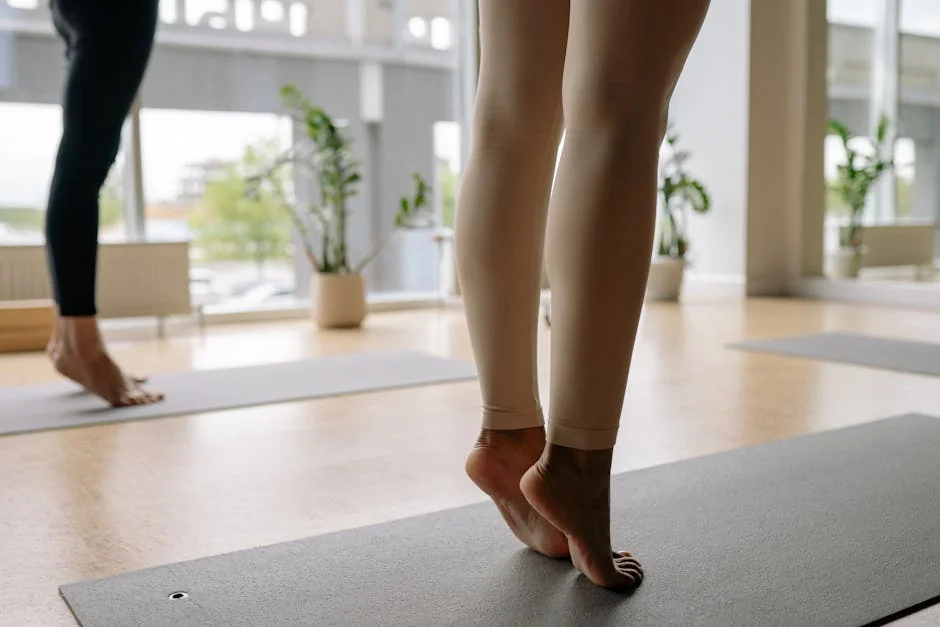In our fast-paced, always-connected world, finding a moment of true calm can feel like a radical act. You’ve likely heard that the best mindful meditation practices can be a powerful antidote to the chaos, but where do you even begin? With so many techniques and apps available, the search for the right one can be overwhelming. Is it about focusing on your breath, scanning your body, or something else entirely? The good news is that the "best" practice isn't a one-size-fits-all prescription; it's the one that resonates with you and fits seamlessly into your life.
This guide is your definitive roadmap. We're cutting through the noise to break down the most effective and accessible mindful meditation techniques for 2024, whether you're a complete beginner seeking stress relief or an experienced practitioner looking to deepen your journey. We’ll explore foundational methods, advanced practices, and the key principles that make meditation stick. Get ready to discover how a few minutes of intentional awareness can reduce anxiety, sharpen your focus, and unlock a profound sense of inner peace.
What is Mindful Meditation? A Foundation for Inner Peace
Mindful meditation is the simple yet profound practice of training your attention to stay in the present moment without judgment. It’s not about emptying your mind or stopping your thoughts—that’s an impossible task. Instead, it’s about changing your relationship with your thoughts and feelings.
The core principle is non-judgmental awareness. You learn to observe whatever is happening—your breath, a bodily sensation, a sound, or a passing thought—with an attitude of curiosity and acceptance. You notice the mind has wandered, gently acknowledge it without self-criticism, and guide your attention back to your anchor. This simple act, repeated over and over, is the essence of the practice.
This differs from other popular forms of meditation. While guided visualizations often direct you to imagine specific scenes to evoke relaxation, and mantra-based practices involve repeating a sacred word or phrase, mindfulness is about anchoring yourself in the raw data of your present-moment experience. If you're looking for more structured support, exploring the best guided meditation can be an excellent starting point.
Scientific research has solidified what practitioners have known for millennia. Regular practice is linked to a host of benefits, including measurable reductions in stress, improved ability to focus, and better emotional regulation. It’s a mental gym where you build the muscle of awareness.
The Core Benefits: Why Finding the Best Mindful Meditation Matters
Understanding the powerful, evidence-based benefits of mindfulness provides the motivation to find a practice that works for you. This isn't just a vague feel-good activity; it's a tool that creates tangible, positive changes in your brain and body.
Stress and Anxiety Reduction When you encounter stress, your body releases cortisol, the primary stress hormone. Chronic high cortisol levels can wreak havoc on your health. Mindfulness meditation acts as a buffer. Studies show it can shrink the amygdala, the brain's fear center, while strengthening the prefrontal cortex, which is responsible for rational thought. This neural shift means you become less reactive to stressors and better able to respond with clarity. You learn to observe anxious thoughts as mental events that will pass, rather than as absolute truths you must obey. For those struggling with persistent worry, a dedicated resource on the best guided meditation for anxiety can offer targeted relief.
Enhanced Focus and Concentration We live in an age of constant distraction. Mindful meditation is the ultimate focus training. By repeatedly bringing your attention back to a single point, like your breath, you are literally exercising your brain's attentional circuits. This builds your capacity for sustained concentration, making you more productive and efficient in your daily work and personal life. You become better at spotting when your mind has drifted and more skilled at returning to the task at hand.
Improved Emotional Health Mindfulness creates a crucial pause between a triggering event and your reaction. In that space, you gain choice. Instead of being swept away by a wave of anger or sadness, you can observe the emotion with curiosity. Where do you feel it in your body? What thoughts accompany it? This process of "name it to tame it" reduces the emotion's intensity and allows you to respond in a way that aligns with your values, rather than lashing out or suppressing your feelings.
Better Sleep and Physical Wellness The relaxation response triggered by meditation counteracts the body's stress-induced fight-or-flight mode. This leads to lower blood pressure, improved heart rate variability, and a reduction in physical tension. For sleep, this is invaluable. A brief body scan meditation before bed can quiet the mind and signal to the body that it's safe to rest, helping to combat the racing thoughts that often cause insomnia.
Key Principles for an Effective Mindful Meditation Practice
Before diving into specific techniques, it's essential to grasp the fundamental principles that make any practice effective. These guidelines will help you build a sustainable habit and avoid common pitfalls.
Consistency Over Duration The single most important factor is regularity. A five-minute daily practice is infinitely more powerful than a one-hour session once a month. Consistency trains your brain to make mindfulness a default mode, not a special event. Start with a small, manageable commitment—even just 3-5 minutes per day—and gradually increase the time as it feels natural. The goal is to build a habit, not achieve perfection.
The Role of a Non-Judgmental Attitude Your mind will wander. It’s not a matter of if, but when. This is not a sign of failure; it is the entire point of the practice. Each time you notice your mind has drifted and you gently guide it back, you are doing a mental rep. The key is to let go of judgment. Instead of thinking, "I'm terrible at this, I can't stop thinking about my to-do list," simply note, "thinking," and return to your anchor. This cultivates self-compassion, which is the bedrock of a lasting practice.
Finding Your Anchor An anchor is a neutral point of focus that you return to when you get distracted. It grounds you in the present moment. The most common anchors are:
- The Breath: The sensation of the air moving in and out of your nostrils, or the rise and fall of your chest or abdomen.
- Bodily Sensations: Noticing the feeling of your feet on the floor or your hands in your lap.
- Sounds: Listening to the sounds in your environment without labeling or judging them. Your anchor is your home base throughout the practice.
Creating a Conducive Environment While you can practice mindfulness anywhere, setting up a supportive space can help in the beginning.
- Find a relatively quiet place where you won't be interrupted.
- Sit in a comfortable, dignified posture. Your spine should be straight but not rigid, allowing for natural breathing.
- You can sit on a cushion on the floor or in a chair with your feet flat on the ground. Remember, the ultimate goal is to bring mindfulness into your entire life, so don't become overly dependent on perfect conditions.
Exploring the Best Mindful Meditation Techniques for Beginners
If you're new to meditation, starting with these foundational practices will build your confidence and skill. They are simple, highly effective, and form the basis for nearly all other best meditation techniques.
Breath Awareness Meditation
This is the cornerstone of mindfulness practice. It seems simple, but focusing on the breath offers a profound training ground for your attention.
A Step-by-Step Guide:
- Find a comfortable seated position and gently close your eyes or soften your gaze.
- Bring your attention to the physical sensation of your breathing. Notice where you feel it most distinctly—perhaps at the nostrils, in the chest, or in the rise and fall of your abdomen.
- Focus on the natural rhythm of your breath without trying to control it. There is no "right" way to breathe.
- Your mind will inevitably wander. When you notice this has happened, gently acknowledge it (you can silently say "wandering" or "thinking") and guide your attention back to the sensation of the next inhale or exhale.
- Continue this process for your chosen time, whether it's 5, 10, or 20 minutes.
Body Scan Meditation
The body scan is a powerful practice for grounding yourself in physical sensations and releasing tension. It’s excellent for combating anxiety and improving sleep.
The Process:
- Lie down on your back on a comfortable surface or sit in a supportive chair. Close your eyes.
- Bring your awareness to the toes of your left foot. Notice any sensations you feel—tingling, warmth, coolness, or even numbness. If you feel no sensation, simply notice the absence of sensation.
- After a few moments, slowly move your awareness to the sole of your left foot, then the heel, the top of the foot, and the ankle.
- Continue this process, moving systematically up through your left leg, over to your right foot and leg, up through your torso, back, chest, down through your arms and hands, and finally to your neck, head, and face.
- The goal is not to change anything, but simply to observe with curiosity. If you encounter areas of tension, just breathe into them without forcing relaxation.
Walking Meditation
For those who find sitting still challenging, walking meditation is a perfect alternative. It turns a simple, everyday activity into a rich mindfulness practice.
How to Practice:
- Find a quiet path where you can walk slowly back and forth for about 10-20 paces.
- Stand still for a moment, bringing your awareness into your body. Feel your feet firmly on the ground.
- Begin to walk slowly and deliberately. Pay close attention to the physical sensations of walking.
- Notice the subtle shift of weight as you lift one foot, move it forward, and place it back down. Feel the heel, sole, and toes making contact with the ground.
- When your mind wanders to thoughts or sights around you, gently return your focus to the physical sensations of walking.
- At the end of your path, stop fully, turn around mindfully, and begin again.
Advanced Mindful Meditation Practices to Deepen Your Journey
Once you have built a stable foundation with the beginner practices, you can explore these advanced techniques to expand your capacity for awareness and compassion.
Loving-Kindness Meditation (Metta)
This practice directs warm, compassionate wishes toward yourself and others. It actively cultivates feelings of goodwill and connection, which can transform your relationship with yourself and the world.
A Guide to Cultivating Compassion:
- Begin by sitting quietly and bringing a few moments of attention to your breath to center yourself.
- Silently repeat a series of phrases, first directing them toward yourself. Traditional phrases include: "May I be happy. May I be healthy. May I be safe. May I live with ease."
- Feel the intention behind the words. Don't worry if it feels forced at first; the feeling will grow with practice.
- After a few minutes, bring to mind a benefactor or someone you easily feel love for. Direct the same phrases toward them: "May you be happy..."
- Gradually extend these wishes to a neutral person (someone you see but don't know well), then to a difficult person (if you feel ready), and finally to all beings everywhere without distinction.
Noting Meditation
This technique adds a layer of cognitive labeling to your practice, helping you gain insight into the patterns of your mind. It’s particularly useful when you feel overwhelmed by thoughts or emotions.
The Technique:
- Settle into your meditation with breath awareness as your base.
- As phenomena arise in your field of awareness, you gently note them with a soft, internal label before returning to the breath.
- For example, if you hear a sound, note "hearing." If a memory arises, note "remembering." If you feel restlessness, note "restlessness." If you plan, note "planning."
- The label should be a light touch, not a heavy analysis. The purpose is to create a slight distance between you and the experience, allowing you to see it as a passing event in the mind.
Mindful Listening
This practice uses the soundscape of your environment as the primary object of meditation. It opens you up to a rich world of experience that is often filtered out.
Using Sound as an Anchor:
- Sit comfortably and close your eyes. Bring your attention to your breath for a minute to ground yourself.
- Now, expand your awareness to include all the sounds around you, both near and far. You are not searching for sounds; you are receiving them.
- Notice the layers of sound—the obvious ones and the subtle ones in the background. Listen without labeling the sounds as "good" or "bad." A car horn is just a sound. A bird chirping is just a sound.
- If you find yourself getting caught in a story about a sound ("That siren is so loud and annoying"), gently note "thinking" and return your attention to the raw sensation of the sound itself.
How to Choose the Best Mindful Meditation Style for You
The "best" mindful meditation is a deeply personal choice. It’s the practice that feels sustainable and addresses your current needs. Use this framework to find your match.
Consider your primary intention. Are you looking for a tool for acute stress relief, a way to improve your focus at work, or a method to process difficult emotions?
- For Immediate Calm and Grounding: The Body Scan or Breath Awareness are excellent choices. They directly engage the parasympathetic nervous system to induce relaxation.
- For Focus and Concentration: Breath Awareness is the classic training for a distracted mind. The constant returning to the breath builds attentional control.
- For Emotional Challenges and Self-Criticism: Loving-Kindness (Metta) is transformative. It directly counters negative self-talk and cultivates a kinder inner dialogue.
- For Restlessness and Impatience: Walking Meditation allows you to channel physical energy into the practice. Noting Meditation can also help you work with restless energy by objectively observing it.
- For General Awareness and Presence: Any of the practices work, but Mindful Listening or open-awareness practices (simply observing whatever arises most prominently) are particularly effective.
- For a Positive Morning Routine: Incorporating morning meditation and mindful movement can set a calm and intentional tone for your entire day.
The most effective approach is often one of experimentation. Commit to trying one technique for a full week. Notice how you feel during and after the practice. Does it feel like a chore, or does it bring a sense of settling? After a week, feel free to try a different technique. Over time, you will naturally gravitate toward the practices that serve you best, and you may even blend them to create a personalized routine. The journey itself is the practice.
In a world of constant distraction, the practice of mindful meditation offers a profound anchor to the present moment. This journey has equipped you with the essential tools—from foundational breathing techniques and body scans to integrating mindfulness into daily activities. The key takeaway is that consistency matters far more than duration; a few minutes of daily practice cultivates significant benefits, including reduced stress, enhanced focus, and greater emotional resilience. The true power of mindfulness lies not in perfection, but in the gentle, non-judgmental return to your breath and your body, again and again. This is a personal path of discovery, accessible to everyone regardless of experience. You now possess the knowledge to begin or deepen your practice. Start small, be patient with yourself, and trust the process. A more centered, peaceful, and aware way of living is not a distant goal, but a reality waiting to be uncovered with your very next breath.



